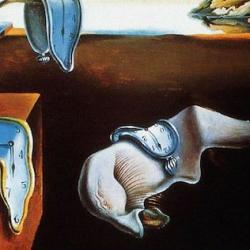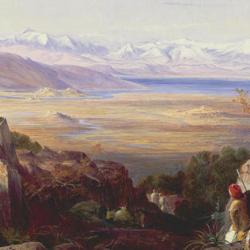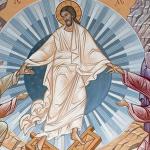Bessian Vorpsi, a young writer from Tirana, makes headlines in the Albanian capital when he decides to spend his honeymoon on the Rrafsh, the High Plateau, a semi-autonomous portion of Albania governed by the detailed rules of the medieval Kanun. He and his wife Diana visit sites about which Bessian has written, and along the way he explains the principles of the Kanun to his beautiful young wife. Bessian knows all about the code, but he has never lived under it, never killed a man, never worn the black arm band that marks a man as a party in a blood feud. He’s an intellectual playing with Homeric fantasies of honor, blood, and bards.
Meanwhile, twenty-six-year-old Gjorg Berisha has just killed a man to avenge the death of his brother. During the seventy years of the Berishas’ feud with the Kryeqyqe family, twenty-two have died on each side of the conflict. After a period of truce, Gjorg will be a marked man, hunted by the family of the man he killed. Gjorg’s spring has been broken in two, since the truce ends in mid-April. For Gjorg, spring will be cut off before it really begins.
The plot of Ismail Kadare’s 1978 novel Broken April turns on a momentary encounter between Gjorg and the Vorpsis, which leaves Diana permanently marked by the wild highlands of Albania and Gjorg overwhelmed by a beauty he has never imagined. But the novel isn’t a plot-driven. It’s about the Kanun, a strict code of brutal justice.
The Berishas’ blood feud started by accident. Gjorg’s grandfather welcomed a stranger into his home one night, and, as the Kanun requires, sent him out with a guide to the border of the village the next morning. The stranger was killed just after he stepped out of the village. Kadare writes, “according to the Kanun, when the guest whom you were accompanying is killed before your eyes, you are bound to avenge him. But if he had been struck down after you had turned your back, you were free of that obligation.” The escort had turned back when the stranger was shot, but there was another complication: “That was the orientation of the victim’s body. . . . The stranger had fallen face down with his head toward the village.” The committee formed to determine the case concluded that “the Berisha who had given the stranger shelter and had fed him, had had the duty to protect him until he left the village lands, and must now avenge him” (32).
The Berisha feud was an application of the Kanun‘s rules of hospitality, as inviolable as the rules of blood feud. Explaining the principles of hospitality to Diana, Bessian quotes an aphorism from the Kanun: “An Albanian’s house is the dwelling of God and the guest.” He explains, “Of God and the guest, you see. So before it is the house of its master, it is the house of one’s guest. The guest, in an Albanian’s life, represents the supreme ethical category, more important than blood relations. One may pardon the man who spills the blood of one’s father or of one’s son, but never the blood of a guest” (76).
This is what Bessian wants to experience in the High Plateau, the divine status of the guest: “The moment a humble wayfarer, his pack on his shoulder, knows at your door and gives himself up to you as your guest, he is instantly transformed into an extraordinary being, an inviolable sovereign, a law-maker, the light of the world.” Like an ancient god, the guest come unexpectedly. That knock can mean “the survival or the extinction of whole generations” (78).
Bessian cites a case in which a killer (“justicer”), fleeing from his victim’s family before the truce went into effect, knocks on a random door and finds himself welcomed into the home of the victim’s father. When the victim’s brothers come in, they want to kill the guest immediately, but the father prevents it: “And so they sat together by the hearth, eating and drinking coffee. As for the dead man, in keeping with the custom, he had been laid out in another room” (80).
Broken April feels like a journey back into a mythical past, except that everyone has a gun and airplanes from Tirana sometimes fly overhead. And the world Kadare describes still exists. The Kanun is real. As recently as 2016, Vincenzo Mattei reported in Al Jezeera that the Kanun “still regulates life for a large portion of the population, it can descend into a blood feud spanning generations and forcing entire families into confinement.” According to Mattei, “Comprised of 12 books and 1,262 articles, the Kanun of Leke Dukagjini, who is thought to have been a 15th-century Albanian nobleman about whom little else is known, was passed down orally for centuries and only put into print in the early 20th century.” Blood feuds still pass from generation to generation, and some Albanians are confined in their homes for decades, lest they be killed if they stepped out in public.
Kadare’s novel is a haunting reminder that the difference between “pre-modern” and “modern” is not as clean as our blithe categories suggest. And it gives the reader a visceral sense of what it means to live under a Kanun, in a world without knowledge that the blood that stops all blood vengeance has already been shed.















